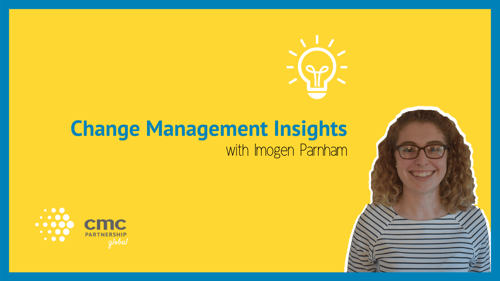Does it work if the change management team is separate to the project management team? This is a question I am often asked.
For many of the customers I advise, what seems to be prompting this query is whether it is important that the technical-side of a given change – designing, developing and delivering the new capability – is handled separately to the people-side of the change – ensuring those impacted by the change are able to embrace, use and adopt the new capability from the get-go.
Discussion and debate around this topic is some of the most stimulating, thought-provoking and, often, challenging I get involved in as a change management professional. How best do project management and change management fit together to support change outcomes for the organisation?
Over many years of working in the change and transformation space, I have delivered change through a variety of project and change management team configurations.
Here are some of the most recent examples:
A few years ago I was working for a large charity, where I took a dual role of the project and the change lead. What this meant in practice was that if I wasn’t planning for the people impact on the new business development capability, ie, the change, then no one else would;
When I was working for a financial regulator, my clear remit was the technical and process capability design, testing and deployment: a colleague working out of the HR Directorate held the remit (and budget) for the people-side of the change;
Currently I am working for a global manufacturing customer. I have been retained to drive people-engagement with, and provide training on, the new ways of working.
What are my reflections and what do I advise my customers about the positioning of change management vis-à-vis project management? Here are my top four tips:
1. It doesn’t need to be project management versus change management.
Successful change can be delivered for organisations irrespective of the structure, or title, of the project and change teams. What matters is that there is a focus on both delivery of the new capability, and on helping staff, partners and customers adopt and proficiently use the new capability.
To my mind, the key is in this dual, indeed equal, focus, and less so in what we call the team, or teams, bringing this focus or who is the boss of that team. In all likelihood, the boss of the team will be called the project manager. This doesn’t matter as long as the project manager understands, values and acts in a structured way to ensure those impacted by the change are able to embrace and adopt the new capability. A tool like Prosci’s 4 Ps Model© can be hugely powerful in shining a light on both the project deliverables – the model’s “Particulars” – and the employees and associates who need to be able to use the project deliverables – the model’s “People”.
2. Integrate project management and change management schedules and deliverables
Bring the change management processes and deliverables into the project schedule. Again, the Prosci change management methodology offers lots of practical tools to do this. What I have found to be very effective, is to hard-wire “Ability” in Prosci’s ADKAR© Model to the project go-live date (or “drop” dates if we are managing our change through an agile or iterative approach).
Through this simple scheduling discipline, I can help ensure that by the time the new capability is deployed, the staff, customers and partners who have to use it understand why the change is happening, have had opportunities to discuss and reflect on what the change means for them, have undertaken any training and have had a chance to put their training into practice. In short, I can help ensure they are well-placed to embrace, use and adopt the change from day one.
3. Integrate Communications
Other elements I look to integrate are the project and change team’s communications plans. Yes, I have worked on a couple of changes over the years where the project team and change team had developed entirely separate communications plans, for the same change. I also push to have the “people challenge risk” – how dependant are we on people adopting this change, how challenging is that going to be, and what is the risk if we fail to meet this challenge – assessed, registered and, critically, managed as part of the project risk management process. I have even been known to rename the project risk register to the change risk register in an effort to put focus on the people-side.
WATCH: : How can I ensure that the project and change management team are truly integrated?
4. Get change management on the agenda
The final, visible, integration point on my checklist is to have responsibility for driving the people-side of the change written into the terms of reference of the project governance board.
And I endeavour, always, to reach an understanding with the change project sponsor that the stacking of agenda items at project board, or steering group, will alternate. Month one, the project management priorities will take the top spots on the agenda and the people-side of the change will follow later in the agenda; at the next meeting, the change management priorities will top the agenda, and project management items will follow.
Learn More
To learn more about how project management and change management can integrate and work alongside each other, take a look at our webinar, 'Project Management and Change Management: An Integrated Approach. Look out for a live delivery of this webinar for an interactive and collaborative session, or watch at your own leisure on-demand.


